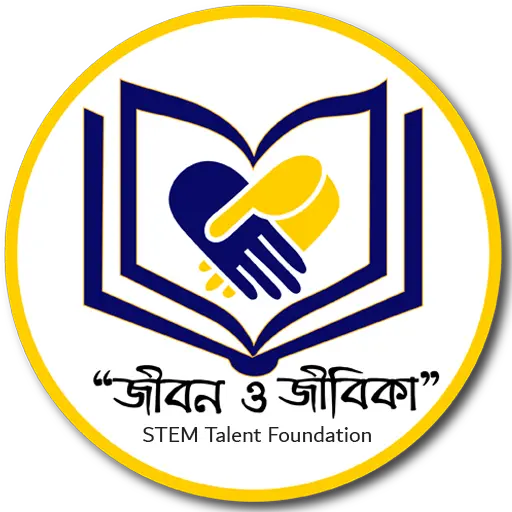Module 1: introduces the fundamentals of artificial intelligence, encompassing AI applications, distinctions between narrow and general AI, and an overview of machine learning, deep learning, and neural networks.
Module 2: delves into Python programming, encompassing environment setup, Git installation and usage, fundamental Python concepts, data structures, and key libraries including Numpy, Matplotlib, and PyTorch.
Module 3: guides learners through AI model construction, covering tensors, datasets, transforms, model building, automatic differentiation, optimization loops, and model storage and deployment.
Modules 4 to 6: progressively delve into deeper AI topics, including object detection and segmentation, object tracking, and fashion style transfer, with comprehensive coverage of techniques, algorithms, implementations, and applications.
Module 7: focuses on model deployment on edge devices, including model conversion, optimization, and deployment on devices like Jetson Nano and Raspberry Pi.
Module 8: elucidates the critical domain of data annotation, detailing its fundamentals, role in machine learning, types (image, text, video, audio annotation), annotation taxonomies, tools, and integration with version control and collaboration platforms.
Collectively, this syllabus offers a holistic learning trajectory, empowering students to master AI concepts, techniques, and data handling skills, enabling them to proficiently engineer AI models catered to diverse application needs, fortified by precisely labeled and annotated data.
Benefits of the Course:
Holistic Understanding of AI: This course offers a holistic introduction to the multidimensional realm of AI, encompassing machine learning and deep learning. Participants gain a solid foundation, preparing them to comprehend, create, and innovate within the AI landscape.
Pivotal Role of Data Tagging: Recognizing the pivotal role of meticulously labeled and annotated data, this course imparts expertise in data tagging and annotation techniques. Participants master the art of generating high-quality datasets, a cornerstone for effective AI model training.
Application Versatility: Armed with a spectrum of AI skills, participants unlock the ability to develop versatile AI models with applications spanning diverse industries, ensuring relevance and impact in a rapidly evolving technological landscape.
Real-world Problem Solving: Modules tailored to object detection, segmentation, tracking, and fashion style transfer equip participants to address real-world challenges through AI-driven solutions, fostering a problem-solving mindset.
Edge Device Deployment: Participants gain proficiency in deploying models on edge devices, optimizing AI solutions for resource-constrained environments. This skill empowers them to create practical, efficient, and accessible AI applications.
Career Acceleration: Mastery of AI principles, data annotation, and deep learning techniques enhances career prospects in burgeoning fields such as data science, AI research, software development, and more.
Innovation and Creativity: The course nurtures innovation and creativity, encouraging participants to explore novel AI applications and contribute to the ongoing evolution of AI technologies.
Global Relevance: The acquired skill set resonates globally, enabling participants to contribute to the global AI ecosystem, regardless of geographic boundaries.
Economic Impact: As AI continues to reshape economies, participants armed with AI expertise play a pivotal role in driving economic growth, technological innovation, and industry disruption.
Preparation for Advanced Learning: This course serves as a stepping stone for future exploration, providing participants with a strong foundation to pursue advanced AI research and emerging technologies.
Minimum Eligibility Criteria:
To fully engage with the AI and data tagging development environment and grasp the concepts presented in the advanced AI and data tagging syllabus, prospective participants should possess a foundational understanding of the following prerequisites:
Educational Background: A minimum of a high school diploma or equivalent is required. While a background in computer science, engineering, mathematics, or a related field is beneficial, candidates from diverse academic backgrounds are welcome to apply.
Programming Proficiency: Proficiency in a programming language is essential. Familiarity with Python is highly recommended, as it is widely used in AI development. Candidates should be able to demonstrate a fundamental understanding of programming concepts, data types, control structures, functions, and basic coding practices.
Mathematical Foundation: A basic grasp of fundamental mathematical concepts is necessary. Candidates should have familiarity with concepts from
linear algebra, calculus, and probability theory, as these are foundational to understanding machine learning and deep learning algorithms.
Commitment and Motivation: Enthusiasm for learning about artificial intelligence, machine learning, deep learning, and data tagging is crucial. Candidates should be committed to engaging with the course materials, participating actively in assignments and projects, and dedicating sufficient time for effective learning.
English Language Proficiency: Since the course materials and communication may be primarily in English, a reasonable level of English language proficiency is recommended to comprehend and engage with the content effectively.
System Requirement:
Hardware Requirements:
- Processor: Multi-core processor (e.g., Intel Core i5 or AMD Ryzen 5) or higher for faster computation.
- RAM: At least 8 GB RAM, though 16 GB or more is recommended for handling large datasets and complex models.
- Storage: SSD (Solid State Drive) with sufficient capacity for storing datasets, models, and software tools.
- GPU (optional but highly recommended): NVIDIA GPU with CUDA support for accelerated deep learning training.
Software Requirements:
- Operating System: Windows or Linux (Ubuntu recommended) for compatibility with various AI frameworks.
- Integrated Development Environment (IDE): IDEs like Jupyter Notebook, PyCharm, or Visual Studio Code for coding and experimentation.
- Version Control: Git and GitHub (or any other Git-based platform) for collaborative development and version tracking.
- Virtual Environment Management: Anaconda or Miniconda for creating isolated Python environments.
- Web Server (optional): If developing web-based AI applications, a web server like Flask or Django might be required.
Internet Connectivity:
High-speed internet connection is recommended for downloading datasets, AI frameworks, and software updates. It is also essential for accessing online resources and collaborating with others.
Course Syllabus (60 Hours):
Module 1: Introduction to Artificial Intelligence
- Understanding AI and its diverse applications.
- Differentiating between Narrow AI and General AI.
- Exploring machine learning, deep learning, and neural networks.
Module 2: Python Programming Essentials
- Setting up the programming environment and installing supporting packages.
- Introduction to Git and version control.
- Fundamentals of Python programming language.
- Exploring data structures and control flow.
- Utilizing Numpy, Matplotlib, and PyTorch for AI development.
Module 3: Building a Strong Foundation
- Introduction to fundamental AI concepts.
- Working with tensors and datasets.
- DataLoader and data transformation techniques.
- Constructing AI models.
- Understanding automatic differentiation and the optimization loop.
- Saving, loading, and using trained models.
Module 4: Advancing into Object Detection and Segmentation
- Introduction to object detection and segmentation.
- Comprehensive tutorials on Torchvision Object Detection Finetuning and Transfer Learning for Computer Vision.
- Torch Hub Series exploration:
- Classification.
- Object Detection.
- Semantic Segmentation.
- Instance Segmentation.
- Person Keypoint Detection.
- YOLOv5/YOLOv8/YOLOv7 for various tasks
- Implementing object detection, pose estimation, and segmentation.
- Custom data training and inference.
Module 5: Progressing into Object Tracking
- Understanding object tracking and its significance.
- Comparing single object tracking with multiple object tracking.
- Exploring image and video-based object tracking.
- In-depth study of popular object tracking algorithms.
- Real-world applications of object tracking in computer vision.
- Initiating your own object tracking project.
Module 6: Exploring Fashion Style Transfer
- Introduction to fashion style transfer.
- Segmenting the human body and defining body parts.
- Estimating key points for fashion applications.
- Implementing fashion style transfer from scratch.
- Testing on static datasets.
- Complete end-to-end implementation, including webcam image capture, body segmentation, part phrasing, virtual dress morphing, and visualization.
Module 7: Model Deployment on Edge Devices
- Deploying YOLOv5/YOLOv8 models on edge devices such as Jetson Nano and Raspberry Pi.
- Learning cross-platform model deployment techniques.
- PyTorch model conversion for edge deployment.
- Optimizing models for resource-constrained environments.
- Hands-on experience with model deployment.
Module 8: Data Annotation and Handling Fundamentals
- Understanding the core principles of data annotation.
- Defining data annotation, its purpose, and its role in machine learning.
- Exploring various types of data annotation: image, text, video, and audio.
- Delving into annotation taxonomies: classification, object detection, semantic segmentation, named entity recognition, sentiment analysis.
- Analyzing manual vs. automated annotation approaches, along with their pros and cons.
- Utilizing annotation tools such as LabelImg, RectLabel, Brat, Prodigy, VGG Image Annotator, CVAT.
- Integration of data annotation with version control and collaboration platforms like GitHub and GitLab.




